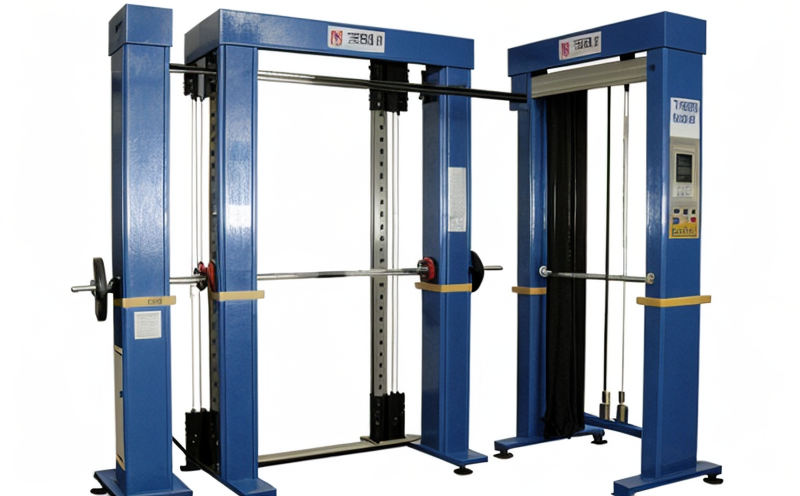ISO 7211-2 Textiles Determination of number of threads per unit length
The determination of the number of threads per unit length is a crucial aspect in textile manufacturing and quality control. This procedure, specified by ISO 7211-2, provides a standardized method to assess the density of yarns or threads within a given length of fabric. This measurement is vital for ensuring product consistency and meeting industry standards.
The process involves sampling a known length of fabric from the product under test. The sample is then carefully prepared by straightening it out on a flat surface, ideally using a grid to ensure uniformity. A set of predetermined points along this length are marked, and at each point, the yarns or threads are counted. The total count per unit length gives an accurate measure of thread density.
The precision of this method is enhanced by the use of specific instruments designed for this purpose. These instruments include counting frames, which provide a consistent and reproducible environment to conduct the measurement. It's important that these tools meet the specifications outlined in ISO 7211-2 to ensure accurate results.
Understanding thread density helps manufacturers optimize their production processes, ensuring they can meet customer expectations for quality and performance. For instance, higher thread counts generally result in a more durable fabric with better resistance to wear and tear. Conversely, lower thread counts may lead to less durable products but could be cost-effective. This balance is critical in determining the optimal specifications for any textile product.
The significance of this measurement extends beyond just quality assurance; it also plays a role in regulatory compliance. Many industries have standards that require specific thread densities for safety or performance reasons. For example, medical textiles must meet stringent thread density requirements to ensure they are strong enough to withstand the stresses placed on them during use.
Accurate determination of thread density can impact various aspects of textile production and final product quality. It influences not only the physical properties like strength but also aesthetic attributes such as texture and finish. In addition, knowing this data is essential for sourcing materials that meet specific requirements set by customers or industry standards.
- Sampling
- Marking predetermined points along the length of fabric
- Counting threads at each marked point
- Using instruments like counting frames for precision
The importance of this test cannot be overstated, especially in sectors where thread density significantly influences product performance and customer satisfaction. By accurately determining thread density using ISO 7211-2, manufacturers can ensure their products meet these critical criteria.
Why It Matters
Determining the number of threads per unit length is essential for several reasons within the textile industry:
- Quality Control: Ensures consistent production and adherence to quality standards.
- Regulatory Compliance: Meets the requirements set by various regulatory bodies ensuring safety and performance.
- Customer Satisfaction: Provides products that meet or exceed customer expectations for durability and texture.
- Optimization of Production Processes: Helps in fine-tuning production methods to achieve optimal results.
The accuracy of this measurement directly impacts the overall quality of the textile product, making it a key metric in textile manufacturing. By understanding and implementing ISO 7211-2 correctly, manufacturers can enhance their competitive edge by producing high-quality products that reliably meet customer needs.
Applied Standards
The measurement of thread density is governed by several international standards including ISO 7211-2. This standard provides detailed guidance on how to perform the test accurately and consistently across different laboratories and industries. It ensures that all measurements are comparable, which is crucial for maintaining high-quality standards in textile manufacturing.
ISO 7211-2 specifies the methodology for determining thread density by counting threads over a specified length of fabric. The standard outlines the necessary equipment, sampling procedures, and data recording techniques to ensure reliable results. Compliance with these guidelines is essential for obtaining accurate measurements that are both repeatable and reproducible.
By adhering to ISO 7211-2, textile manufacturers can demonstrate their commitment to quality and reliability, which builds trust among customers and stakeholders. This standardization also facilitates smoother international trade by ensuring compatibility between different manufacturing processes and products from various countries.
International Acceptance and Recognition
- Australia: ISO 7211-2 is widely accepted in the textile industry across Australia.
- New Zealand: This standard has been adopted by the New Zealand Textile Institute, ensuring its relevance within the country's manufacturing sectors.
- United Kingdom: The UK's National Accreditation Body recognizes ISO 7211-2 for textile testing.
- European Union: EU member states have adopted this standard as part of their internal market policies, promoting harmonization across borders.
The widespread acceptance of ISO 7211-2 underscores its importance in the global textile industry. Its recognition by major economies ensures that manufacturers can confidently use this method to ensure product quality and compliance with international standards.





